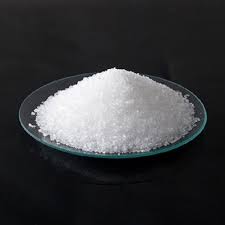Histology and Cytology Market Size, Share, Opportunities & Competitive Analysis, 2024 – 2032
Browse the full report at: https://www.credenceresearch.com/report/histology-and-cytology-market
Market size and growth
Estimates vary by researcher, but the consensus is clear: the market is large and growing at a doubledigit compound annual growth rate (CAGR). Recent market reports place the 2024–2025 global market in the roughly USD 18–22 billion range, with forecasts commonly projecting the market to at least double over the coming decade (CAGRs reported in the ≈10–15% range depending on horizon and segmentation). These projections reflect both growing test volumes worldwide and steadily rising per-test complexity and spend as laboratories adopt automation, digital slide scanning, and molecular adjuncts.
Key Growth Drivers
Rising oncology burden and screening: Increasing incidence of cancer worldwide and expanding screening programs (cervical, breast, colorectal, lung in selected populations) directly lifts demand for cytology and histology testing. Early detection initiatives and population screening strategies in emerging economies are notable growth levers.
Laboratory automation and digital pathology: To address pathologist shortages and scale growing case volumes, labs are buying automated tissue processors, stainers, slide scanners and digital image management solutions. Whole-slide imaging (WSI) and AI-based image analysis are moving from pilot projects into routine use, improving turnaround and enabling remote/centralized reads.
Integration with molecular diagnostics: Histology and cytology are no longer siloed from genomics — IHC, FISH and NGS from FFPE tissue or cytology specimens are routine for targeted therapies. The need for combined morphological and molecular information pushes labs to upgrade workflows and select vendors that provide integrated solutions.
Consumables-driven recurring revenue: Even as instrument sales rise, consumables and reagents continue to generate steady, recurring revenue — a major attraction for suppliers and a factor sustaining overall market value.
Technology
AI-assisted diagnostics: Algorithms for cancer detection, quantification of biomarkers (e.g., PD-L1 scoring), and triage of slides are moving into regulatory approval pathways and real-world implementation. These tools promise higher throughput and more objective reads, but they also require validation, regulatory clarity, and integration with laboratory workflows.
Cloud-enabled pathology and telepathology: Centralized reading models and cloud slide storage allow remote expertise sharing and easier second opinions, which can reduce turnaround time for complex cases.
Liquid cytology and minimally invasive options: Improvements in cytology sampling, liquid biopsy, and cell-free assays complement tissue histology, creating new diagnostic pathways that can increase the number of tests per patient and change sample-preparation workflows.
Automated sample prep and turnkey solutions: Vendors increasingly offer modular, integrated platforms that combine sample prep, staining, scanning and analysis — lowering operational complexity for labs and enabling scale.
Challenges and constraints
Regulatory and reimbursement complexity: Diagnostic test adoption is sensitive to reimbursement policies and regulatory approvals — especially for AI tools and novel molecular assays. Navigating regulatory regimes across geographies adds cost and time for vendors.
Workflow integration and validation: Labs must validate new instruments or AI models against gold-standard histopathology; this is resource-intensive and slows adoption in lower-resourced settings.
Workforce shortages: A shortage of trained histotechnologists and pathologists in many regions creates both a bottleneck and an incentive to automate; however, workforce constraints also slow the pace at which labs can introduce and validate new systems.
Opportunities
For vendors and investors, the most attractive opportunities lie in integrated, vertically packed solutions: automation + consumables + software. Companies that can offer validated AI tools with clear regulatory pathways, or bundle instruments with consumable contracts, are positioned to capture outsized share. For labs, the promise is faster turnarounds, higher reproducibility and the ability to take on more complex molecular and hybrid testing without proportionally increasing headcount. The next five years are likely to see accelerated digital transformation in larger labs, while consumables growth continues across the full market geography.
Request Sample:https://www.credenceresearch.com/report/histology-and-cytology-market#request_sample
Key Player Analysis:
- Hologic, Inc.
- Abbott
- Becton, Dickinson and Company
- Hoffmann-La Roche Ltd
- Merck KGaA
- Thermo Fisher Scientific, Inc.
- Danaher
- Sysmex Corporation
- Trivitron Healthcare
- Koninklijke Philips N.V.
Segmentation:
By Type of Examination
- Histology – By Technique:
- Microscopy
- Immunohistochemistry
- Molecular Pathology
- Cryostat & Microtomy.
- Cytology – By Technique:
- Microscopy
- Immunohistochemistry
- Molecular Pathology
- Cryostat & Microtomy.
- Cytology – By Application:
- Cervical Cancer
- Breast Cancer
- Bladder Cancer
- Lung Cancer
- Other Cancers.
By Application
- Drug Discovery & Designing
- Clinical Diagnostics
- Point-of-Care (PoC)
- Non-PoC
- Research
By Product
- Instruments and Analysis Software System
- Consumable and Reagents
By Region
- North America
- U.S.
- Canada
- Mexico
- Europe
- UK
- France
- Germany
- Italy
- Spain
- Russia
- Belgium
- Netherlands
- Austria
- Sweden
- Poland
- Denmark
- Switzerland
- Rest of Europe
- Asia Pacific
- China
- Japan
- South Korea
- India
- Australia
- Thailand
- Indonesia
- Vietnam
- Malaysia
- Philippines
- Taiwan
- Rest of Asia Pacific
- Latin America
- Brazil
- Argentina
- Peru
- Chile
- Colombia
- Rest of Latin America
- Middle East
- UAE
- KSA
- Israel
- Turkey
- Iran
- Rest of Middle East
- Africa
- Egypt
- Nigeria
- Algeria
- Morocco
- Rest of Africa
About Us:
Credence Research is committed to employee well-being and productivity. Following the COVID-19 pandemic, we have implemented a permanent work-from-home policy for all employees.
Contact:
Credence Research
Please contact us at +91 6232 49 3207
Email: sales@credenceresearch.com
Website: www.credenceresearch.com




Comments
Post a Comment